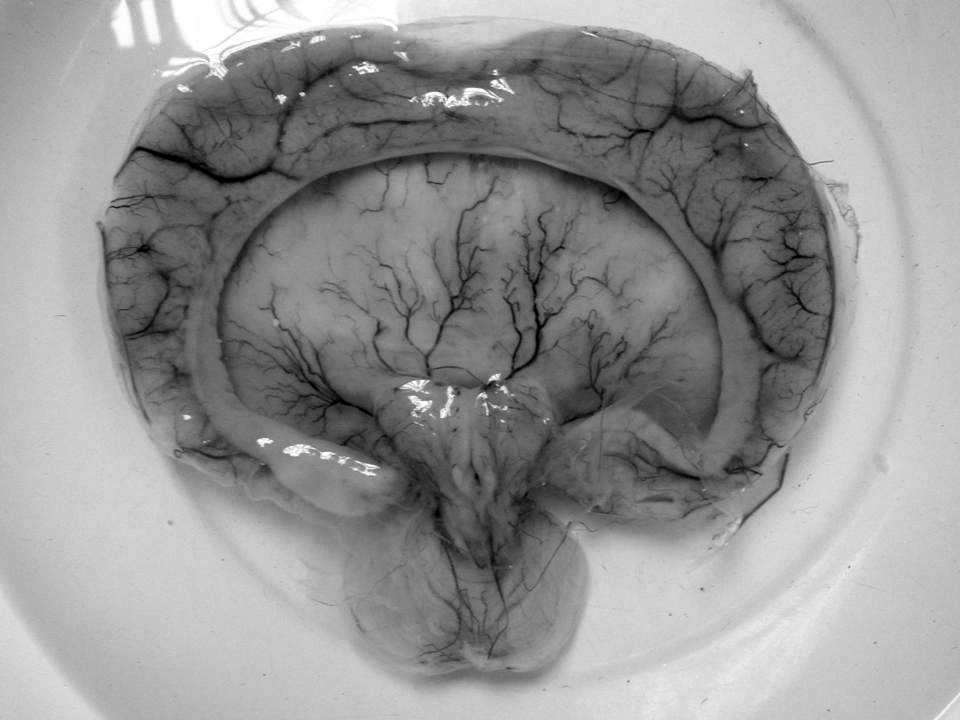Pseudotrisomy 13 Syndrome

Clinical Features
Hewitt et al. (1989) reported a fetus with holoprosencephaly and polydactyly and a normal karyotype. They cited 2 similar reports (Young and Madders, 1987; Moerman and Fryns, 1988). Because holoprosencephaly and polydactyly are features of trisomy 13, Hewitt et al. (1989) suggested the designation pseudotrisomy 13.
Cohen and Gorlin (1991) used the term pseudotrisomy 13 syndrome to designate cases of holoprosencephaly, severe facial anomalies, postaxial polydactyly, various other congenital defects, and normal chromosomes. They summarized 11 examples. They concluded that the cases reported by Bachman et al. (1990) were instances of this syndrome and not of the hydrolethalus syndrome (see 236680). The other cases from the literature cited by Bachman et al. (1990) as holoprosencephaly in hydrolethalus syndrome were thought by Cohen and Gorlin (1991) to be in error.
Verloes et al. (1991) observed 5 unrelated children with the syndrome and suggested the designation holoprosencephaly-polydactyly syndrome. They commented on the phenotypic overlap not only with the hydrolethalus syndrome but also with lethal acrodysgenital dwarfism (see Smith-Lemli-Opitz syndrome, 270400).
Hennekam et al. (1991) emphasized the occurrence of heart defect with holoprosencephaly and postaxial polydactyly. They reported male and female sibs, the offspring of second-cousin parents.
Seller et al. (1993) diagnosed prenatally 2 sibs with holoprosencephaly, midface hypoplasia, and normal chromosomes. One of the sibs also had polydactyly.
Ramos-Arroyo et al. (1994) reported the case of a baby with holoprosencephaly, median cleft lip, cardiac and genital anomalies, normal upper limbs, and a normal 46,XX karyotype. This is a instance of uncertainty between variable expression and basic heterogeneity. They reviewed reports of 22 cases of pseudotrisomy 13 syndrome and found postaxial polydactyly in 19 and preaxial polydactyly in 1.
Amor and Woods (2000) described a brother and sister with pseudotrisomy 13. Both had holoprosencephaly, polydactyly, cardiac lesions, and a normal karyotype. The parents were first cousins.
InheritanceCohen and Gorlin (1991) noted that 2 pairs of affected sibs (Atkin, 1988; Bachman et al., 1990) and 2 other cases with consanguinity suggested autosomal recessive inheritance. They suggested that alternatively an undetected microdeletion or etiologic heterogeneity, some cases possibly representing dominant new mutations, should be considered.
The 2 affected sibs reported by Seller et al. (1993) and consanguinity in the family reported by Amor and Woods (2000) supported autosomal recessive inheritance.
CytogeneticsRelevant to this syndrome may be the analysis of Brown et al. (1993) which defined band 13q32 as being associated particularly with major malformations and digital abnormalities. Patients with more distal deletions had severe mental retardation but did not have major malformations or growth retardation.
Koolen et al. (2006) reported a male patient with lobar holoprosencephaly and unilateral preaxial polydactyly of the hand associated with a 1.24-Mb duplication at chromosome 5q35.1. Clinical features included mild mental retardation, asymmetric facies with upslanting palpebral fissures, ventricular septal defect, seizures, ankle clonus, and bilateral Babinski sign. Koolen et al. (2006) suggested that the FBXW11 gene (605651) may be involved, given its potential role in processing of GLI3 (165240), which is implicated in several congenital skeletal syndromes.